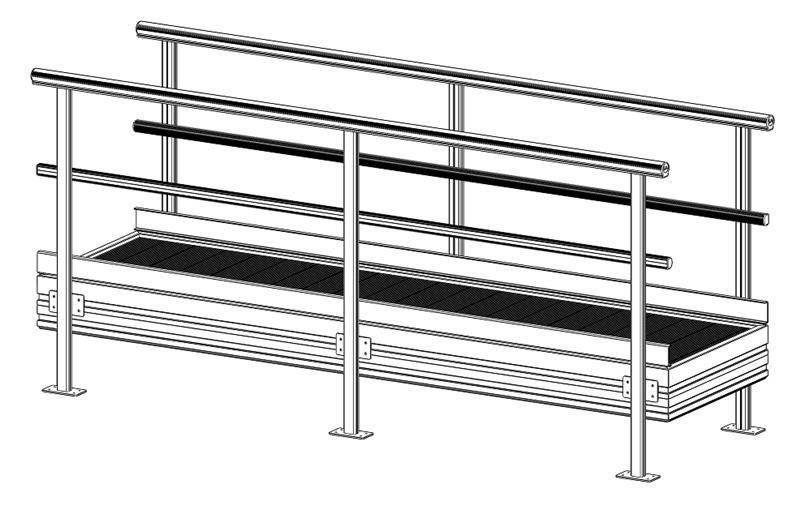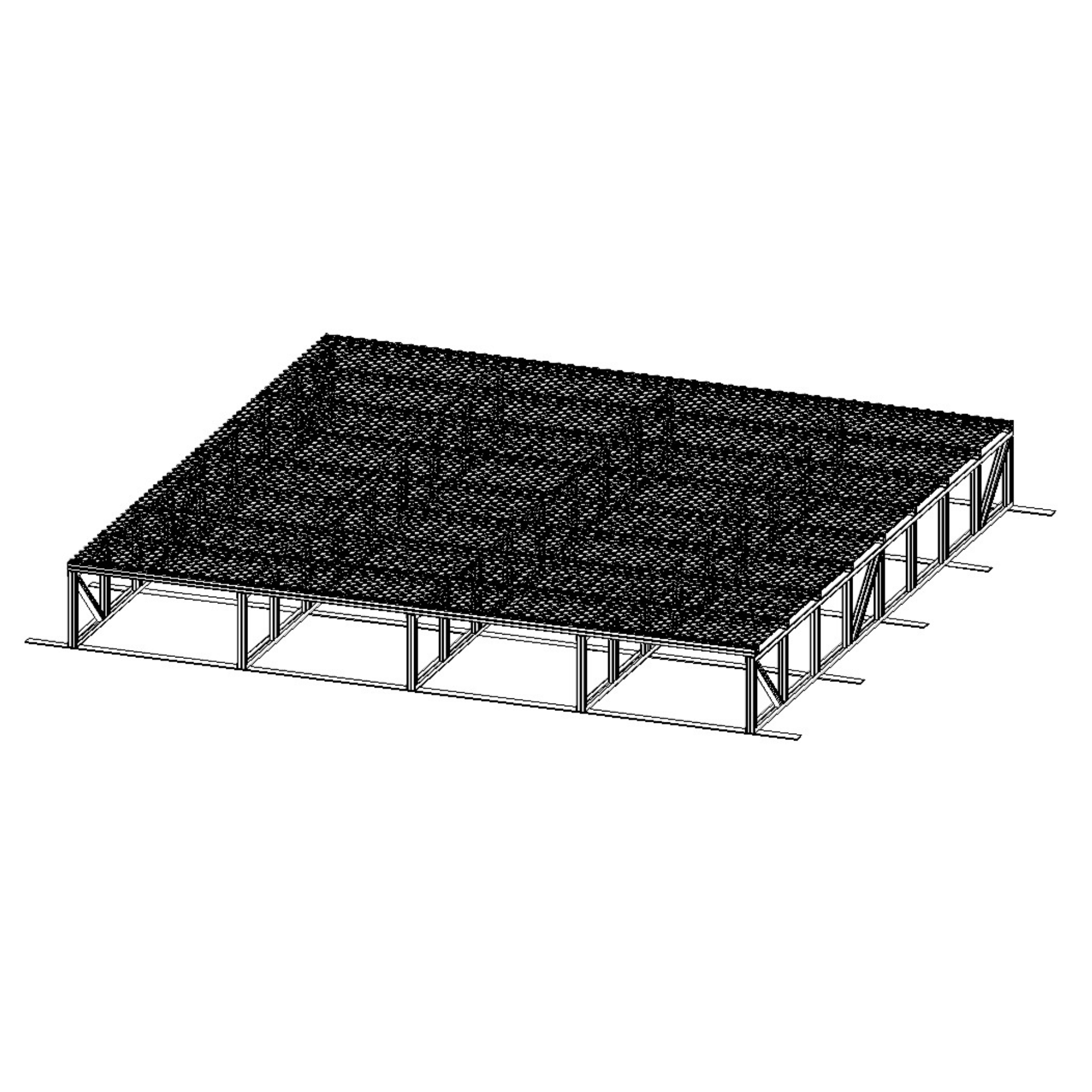Data centre
access solutions
Safe Access Systems for Data Centres
Access challenges in data centres aren’t optional risks - they’re critical design problems.
From rooftop HVAC units to tight riser spaces, every access point must be safe, compliant, and built for long-term reliability.
Data centres - whether hyperscale, colocation, or edge - present specific access and height safety challenges:
- Rooftops crowded with HVAC, cooling towers, and solar panels
- Tight risers and cable trays needing vertical access
- Confined service rooms and underfloor areas with poor entry options
- High-risk work areas where fall protection is patchy or improvised
Unplanned downtime or safety incidents during maintenance can cost more than just time - they risk compliance, infrastructure, and lives.

The Solution
We design, manufacture, install and certify custom access systems that solve these challenges:
- Rooftop access using static lines, rail systems, and non-slip walkways that keep technicians securely attached and free to move.
- Cooling tower and HVAC access with engineered stairs, guard rails, and platforms for safe, routine servicing.
- Confined space solutions including rated ladders, hatches, and anchor points for safe entry and retrieval.
- Cable tray and service riser access with modular, space-efficient ladder and platform designs.
Built from corrosion-resistant, low-maintenance materials, every system is fire-compliant, backed by a 25-year warranty, and tailored to integrate with existing building services and security protocols.
Designed for Data Centre Operations
- Seamlessly integrate with facility access controls and BMS
- Minimise disruption during installation and maintenance
- Support compliance with AS/NZS and confined space standards
- Backed by full service: audits, design, fabrication, install, certification
Height Safety Compliance in Data Centres
Design Phase Obligations
Architects and engineers in Australia are legally required to address fall risks at the source during the design phase.
Under the Work Health and Safety (WHS) Act and Regulations, anyone designing a workplace structure (including data centres) must ensure, so far as is reasonably practicable, that the structure is without health and safety risks - this means designing out hazards like falls from height.
In practice, compliance involves incorporating permanent fall prevention measures in the plans: for example, designing safe access to rooftops and elevated HVAC platforms with compliant fixed ladders, guardrails, and walkways (to AS 1657:2018), and providing fall-arrest anchor points or static lines (to AS/NZS 1891 series) where needed.
Legally, the WHS Regulations mandate that fall hazards be eliminated or minimised by design - work should be done from ground level or on solid constructions where possible, and if not, a safe system of work with adequate fall protection must be built in.
Compliance with Australian Standards is not legally mandatory unless specifically referenced in legislation. However, it is considered best practice and often essential to meet WHS obligations under the general duty of care. In particular, AS 1657 and AS/NZS 1891 are commonly used to demonstrate that access systems in data centre environments, such as rooftops and cable risers - are safe and compliant.

Ongoing Obligations for Facility Managers
Once a data centre is operational, the facility manager (as the PCBU under WHS law) has a duty to maintain and monitor all height safety systems.
Legally, all fall protection equipment and structures must be kept in safe working order – the WHS Regulations require a program of regular inspections, testing, and certification to ensure that control measures (like roof anchors, static lines, guardrails, and access ladders) remain effective.
For example, permanently fixed anchor points and lifeline systems should be inspected by a competent person and re-certified at scheduled intervals (commonly every 12 months, or more frequently if used often).
Personal protective equipment such as harnesses and lanyards must also be maintained and inspected per AS/NZS 1891.4 requirements. Legally, any issues (e.g. a damaged anchor or ladder) must be rectified promptly, and records of inspections, maintenance, and worker training should be kept to demonstrate compliance.
Best practice for data centre operators is to go beyond the minimum – this includes proactive maintenance (with inspections before due dates), periodic audits of all height access areas, and thorough training and permit systems for special scenarios like confined spaces or vertical cable risers that combine height and access hazards. By exceeding basic compliance and continually managing these risks, facility managers ensure ongoing safety for anyone working at heights in and around the data centre.

Key Safety Considerations Inside Data Centres
Modern data centres pose unique challenges when it comes to safe access. Unlike typical commercial environments, they often feature:
Overhead Power Distribution
Power is commonly delivered via overhead busways or tray systems, requiring personnel to work at height to install or service critical infrastructure. Fixed walkways or suspended access systems may be needed for safe, compliant work.
Higher Ambient Temperatures
Server density and continuous equipment operation create heat-intensive environments, especially in hot aisles. This affects both human comfort and material performance, making ventilation and passive heat management crucial.
Emerging Battery Technologies
Many data centres now use lithium-ion battery systems for backup power (UPS). While efficient, these systems introduce new fire and chemical exposure risks - requiring access solutions that consider clearance, isolation zones, and safe egress routes during emergencies.
Designing safe access in these environments means considering electrical safety, fall protection, heat stress, and compliance with AS 1657 and AS/NZS 1891.1 standards.

What to Know About Cooling Plant Access Outside Data Centres
External cooling plants (e.g. chillers, dry coolers, condenser units) are typically located on rooftops or dedicated platforms, requiring robust structural access for maintenance teams.
Structural Access Solutions
Fixed stairs, gantries, and elevated walkways must be engineered to suit the plant layout and rooftop structure. These elements must allow safe movement around, between, and over plant - without requiring temporary ladders or makeshift solutions.
Edge Protection
Where a fall risk exists, guardrails are mandatory under WHS legislation. Foldable or removable options may be required to maintain roofline aesthetics or meet acoustic enclosure designs.
Weather Exposure
Outdoor systems are subject to wind, corrosion, and thermal expansion. Aluminium is commonly used due to its lightweight, corrosion-resistant properties, but must be designed to meet load and slip resistance requirements.
Planning access early, ideally before final plant layout, is critical to avoiding compliance gaps and expensive retrofits.
Contact Us
For top-quality, custom-engineered and food grade access solutions for your facility, contact Safetylyne today. Our experts are ready to provide comprehensive safety audits, recommendations, and installations to ensure the highest level of safety and efficiency for your operations.
